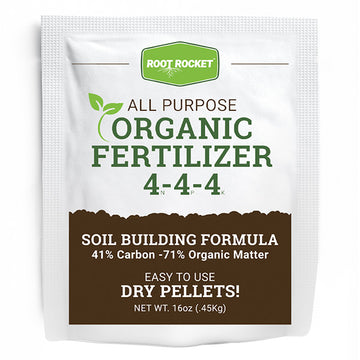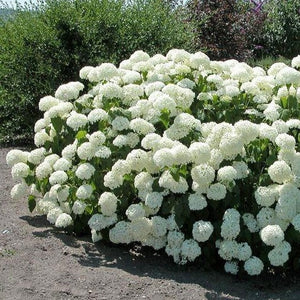Hydrangea care isn’t complicated once you know whether the particular variety you have prefers sun or shade. (If you aren’t sure, check out our article on Hydrangea Types.) Once you choose the right spot to plant your hydrangea there are just a few things to know. Read on to learn how to grow hydrangeas.
How To Grow Hydrangeas
For the most part, hydrangeas are easy to grow and maintain, once they get established. What is the secret to growing hydrangeas? Soil pH levels and the right amount of sun are important to help your hydrangea thrive. However, there are a few other things you need to consider.
Know Your Growing Zone
All hydrangeas can grow in USDA planting zones five to nine. Some types of hydrangeas can grow in up to zone eleven. Some are more cold-hardy and can even grow in zones three and four. The six different types of hydrangeas thrive in different zones.

Big leaf hydrangeas, or French hydrangeas, the most common type of hydrangea, can grow in zones five to eleven.
Smooth hydrangeas grow in zones three through nine.
Panicle hydrangeas thrive in zones three to eight.
Oakleaf hydrangeas grow best in zones five to nine.
Climbing hydrangeas like zones four to eight, but don’t do as well in zone seven.
Mountain hydrangeas prefer zones six to nine.
More specific strains of these general categories of hydrangea may vary slightly, so do a little research before you plant. You can check your hardiness growing zone here.
How To Plant Hydrangeas
Spring and fall are the best times to plant these flowering shrubs. However, they can be planted in winter in areas where the ground is able to be dug and in summer with plenty of water.
The intent is to give the hydrangea’s roots a chance to become well-established before the hottest months of summer or the coldest months of winter. For this reason, it’s best to plant hydrangeas in the “shoulder seasons,” when the weather isn’t going to sunburn or freeze their roots. Autumn might be a slightly better time than spring because the hydrangeas have the chance to overwinter and get well-established before they need to deal with the heat of summer.
In terms of the time of day, avoid planting hydrangeas at the hottest times or in direct sunlight, to help the plants get nice and comfy in the dirt before they have to deal with the sun.
When you plant a hydrangea, dig a hole double to triple the size of your root ball. Gently remove the hydrangea from the container and free the roots if it’s root-bound. Place the plant in the hole and fill it halfway with soil. Water it thoroughly and then fill in the rest of the soil. The base of the plant should be level and not above or below the ground.
Determine Sunlight

In most cases, the answer to “Where should you not plant hydrangeas?” is in full sunlight. Most varieties of hydrangeas prefer at least partial shade. The exception to this rule is if you are in the northern United States. However, most varieties of hydrangea bushes prefer some shady protection from the hottest sun, especially in warmer climates where they get particularly harsh sun. Although, if you’re dead set on planting your hydrangeas in full sun, some varieties will do all right but only if their soil is kept damp.
Big leaf hydrangeas like partial to full shade, but they can manage in full sun if they’re in consistently moist soil. Similarly, smooth hydrangeas like part shade and can grow in full sun if their soil is kept moist.
Panicle hydrangeas and oakleaf hydrangeas are happy enough in full sun to part shade.
Climbing hydrangeas need partial to full shade to do really well.
Mountain hydrangeas like part shade.
Individual strains of hydrangea may vary in their sunlight exposure preferences, but these basic guidelines can get you started.
Check Your Soil
Hydrangeas are adaptable but thrive in moist, well-drained, fertile soil.
For some varieties of hydrangea, soil makeup will change the color of the blooms.
Panicle and climbing hydrangeas will generally only come in white regardless of soil composition.
Bigleaf hydrangeas, smooth hydrangeas, oakleaf hydrangeas, and mountain hydrangeas can produce blossoms of different colors depending on the alkalinity or acidity of the soil.
Bigleaf hydrangeas can come in the widest variety of colors. More acidic soil, or soil with a PH above 0.5, will encourage hydrangeas to produce bluer flowers. Higher alkaline soil levels turn the flowers pinker. Depending on your alkaline or acid levels, the blossoms produced by hydrangeas can fall anywhere on that spectrum–purples, reds, pinks, blues, or whites.
Smooth hydrangeas produce white to pink flowers, and oakleaf hydrangeas produce white to pink or purple flowers, depending on soil alkalinity.
Mountain hydrangeas tend to be naturally pink, but highly acidic soil will turn them blue.
Individual results may vary. There are breeders creating different strains of hydrangea regularly. Some of these might have different colors and might interact with soil alkaline and acid levels differently than others.

pH Adjustment
If you want pink blooms amend your soil with lime to increase the pH. Apply sulfur around your plant if you want blue blooms. Sulfur will lower the pH and increase the acidity of the soil. Apply Espoma organic soil acidifier to change the color from pink to blue.
A good pH balance is important for the health of any plant. Determining what adjustments you might need to make may be as simple as looking: if you’re getting blue flowers and you want pink ones, then it may be as simple as sprinkling lime on the soil around the hydrangeas to get them to turn pink next season. Soil test kits can be purchased at most hardware stores (or, if you want to get really technical, then you can get a professional-grade test).
Water Thoroughly But Don’t Overwater
Keep the soil moist, but not saturated. This is especially important in summer and in the first year after planting. These flowering shrubs will do best with a deep watering once or twice weekly when it is hot and dry.
Moist soil is particularly important for hydrangeas getting full sunshine for part or all of the day. Bigleaf hydrangeas and smooth hydrangeas do well with quite a bit of sun exposure, but only if they are sufficiently watered throughout the day.
Generally speaking, in good soil with the right amount of sunshine, most hydrangeas are easy to care for. They don’t need watering every day and they’re not too fragile.
Add Mulch
Applying mulch 1 to 2 inches deep is highly recommended for hydrangea plants. Mulching will cut back on watering needs, keep weeds at bay, and protect your plant in extreme temperatures. In cold climates, adding some extra mulch in winter will help protect the roots.
Exercise a little caution when making mulch selections. Since some varieties of hydrangeas may change color based on the amount of acidity or alkalinity in their soil, you’ll need to pay attention to what goes into your mulch and fertilizer. Likely it won’t impact the soil composition much, but it’s something to be aware of.
Fertilize But Don’t Over Fertilize
A mistake many people make with their hydrangeas is to over-fertilize. This puts too much nitrogen in the ground and can cause your hydrangeas to stop blooming. Instead, feed these bushes in spring with a slow release fertilizer for best results.
Take Care When Pruning
Pruning varies amongst the different hydrangea types.
Old Wood Blooming Hydrangeas
-
Big Leaf (Mophead and Lacecap) – Prune in summer or early fall when the blooms are spent. Remove up to ⅓ of the stems each year. Remove the weakest old and new shoots by pruning them at the ground or back to the main trunk.
-
Oakleaf – Oakleaf hydrangeas like the Ruby Slippers Oakleaf Hydrangea do not require pruning. Trim them up lightly after they are done flowering if you want a cleaner look.
New Wood Blooming Hydrangeas
-
Smooth – Prune smooth hydrangeas all the way back to the ground in winter or early spring while they are dormant.
-
Panicle – Panicle hydrangeas don’t need to be pruned every year. If they are overgrown or the stems are unable to support their blooms prune the entire bush back ¼ to ½ during dormancy.
New and Old Wood Blooming Hydrangeas
Reblooming or Endless Blooming –These hydrangea types tend to be compact and don’t require pruning. You can deadhead spent flowers during the growing season.
Deadheading can be done on any hydrangea type at any time. Although this isn’t necessary it creates a cleaner look and can help encourage flower buds to rebloom. Trim the stem back to right above the first set of leaves below the bloom.
Hydrangeas are fairly forgiving of pruning practices, and most hydrangeas will be happy with simple deadheading.

How Long does it Take for a Hydrangea to Grow to Full Size?
When it comes to the rate of growth, that depends on the variety of hydrangea. However, most varieties of hydrangeas take two to four years to mature to full size.
When Do Hydrangeas Bloom?
Hydrangeas have a lengthy flowering season. Hydrangeas can bloom all the way from June until October, providing color to your landscape for two or three seasons.
Will Hydrangeas Grow in Pots?
It’s possible to grow some varieties of hydrangeas in pots. However, some varieties of hydrangeas get quite large–up to twelve feet tall. Those would require some pretty big pots. Some varieties of hydrangea never get bigger than two or three feet, and they are more appropriate for pots.
Here are some tips for growing hydrangeas in pots:
- Hydrangeas are large and will require larger pots. With dirt these pots can get heavy so choose a pot with wheels so you can move them as needed.
- Use organic potting soil.
- Feed them slow release fertilizer.
- Water thoroughly but don’t over water. Hydrangeas will start to wilt to signal they need a drink of water. Twice a week is the suggested amount, however you’ll need to watch your plant’s cues. Also, make sure your pot has enough drainage.
- When the flowers die, snip them off to encourage new growth.
- In colder climates, in winter, you may have to move your pots into a garage or covered porch to prevent freezing.
Now you know how to grow hydrangeas. We have armed you with the information you need to have a super healthy and happy hydrangea!
Browse a variety of Hydrangeas for sale online. From the beautiful Strawberry Sundae Hydrangea to the Pistachio Hydrangea and more, browse our premium selection.
You May Also Like:










